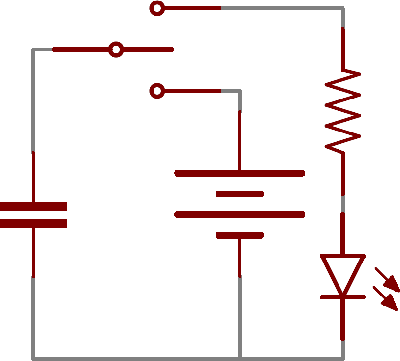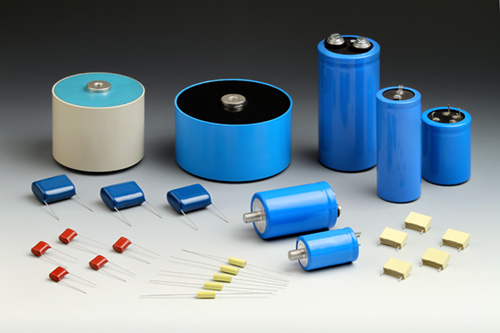The Theory of Capacitive Sensing
First, to understand Capacitive Sensing, one must be familiar with what a capacitor is and how it works.
Capacitors are comprised
of two parallel conducting  plates with a dielectric between the plates.
When a electric current (a flow of electrons) is applied
across the plates, the plates polarize. One plate takes an
positive charge Q as the electric field pushes electrons
to the other plate, making it negatively charged Q.
Electrostatic energy is stored in an electric field
between the plates. This charge or energy can be charged
and discharged freely.
plates with a dielectric between the plates.
When a electric current (a flow of electrons) is applied
across the plates, the plates polarize. One plate takes an
positive charge Q as the electric field pushes electrons
to the other plate, making it negatively charged Q.
Electrostatic energy is stored in an electric field
between the plates. This charge or energy can be charged
and discharged freely.
Capacitance is a measurement of how much
energy a
capacitor can hold.
http://images.tutorvista.com/cms/images/83/capacitor.jpg
Capacitance = Charge held by plates (Q) /
Potential Difference (V) = permittivity constant * area of
plate / distance between plates.

A capacitor has a fixed amount
of energy it can hold and once it is charged, it can
retain this energy even if it is not connected to
the power source. The figure to the left, shows a
capacitor (left component) being charged a battery
(middle component) to a certain voltage (as defined
by its capacitance). Then, a switch is flipped which
opens up a circuit with a resistor and light. The
electric current being represented by the yellow
lines, you can see the capacitor illuminate the
light in the separate current. Notice how the charge
dissipates to zero on the capacitor when it lights
the component.
https://learn.sparkfun.com/tutorials/capacitors/capacitor-theory
The powerful
fact that the capacitance and in turn, the voltage a
capacitor is capable of producing, is a function of
the area of the plates and distance between the
plates is very important to capacitive sensing. As a
plate is pulled or pushed from the other, the
voltage and capacitance of the component will
change. Furthermore, they will change proportionally
(inversely) to one another. As a plate "grows" the
capacitance will also change proportionally
(directly).
A great video showing the
effect of distance between plates:
https://www.youtube.com/watch?v=WHAMIx-Afrg
Another
method of changing capacitance is by changing the
dielectric. A non-conducting material between the
two conducting plates boosts the capacitance of a
component. If that material properties change, so
too will the capacitance.
A capacitive
sensor will rely on the area of the plate changing,
the distance of the other plate, dielectrics or even
the introduction of another conductor. A volt meter
will measure the change in voltage and thus be able
to "sense" and quantitatively measure the change in
the macro/physical word.
(http://www.electrocube.com/electrocube/assets/Image/products/seacor-capacitors-full-line-05214.jpg)
